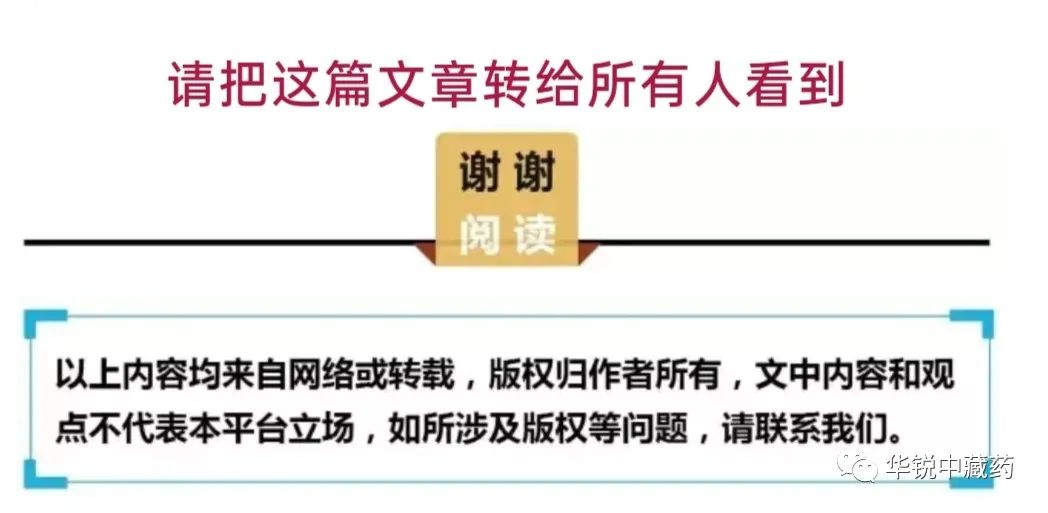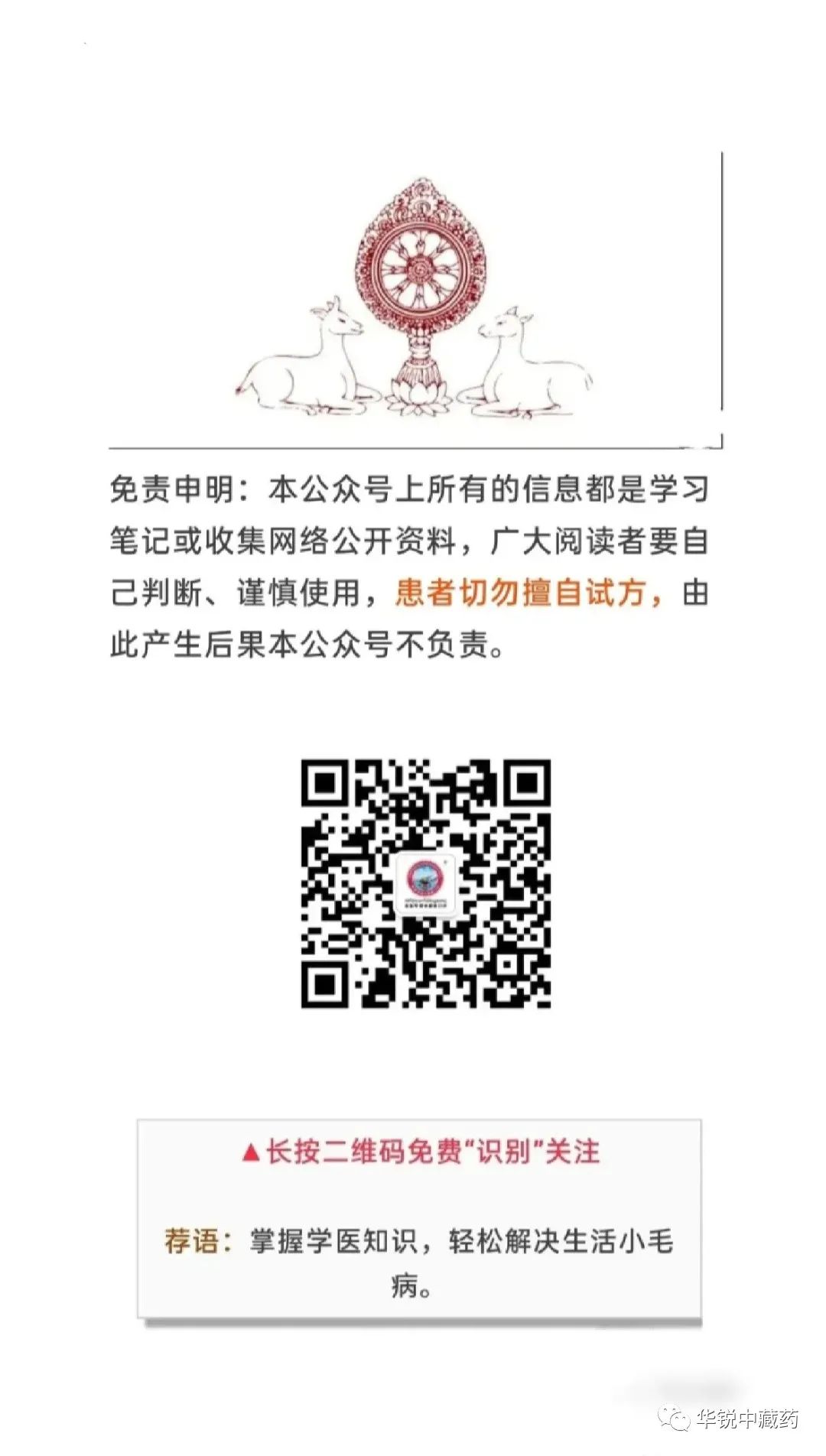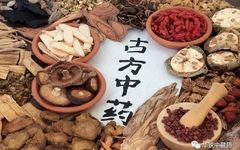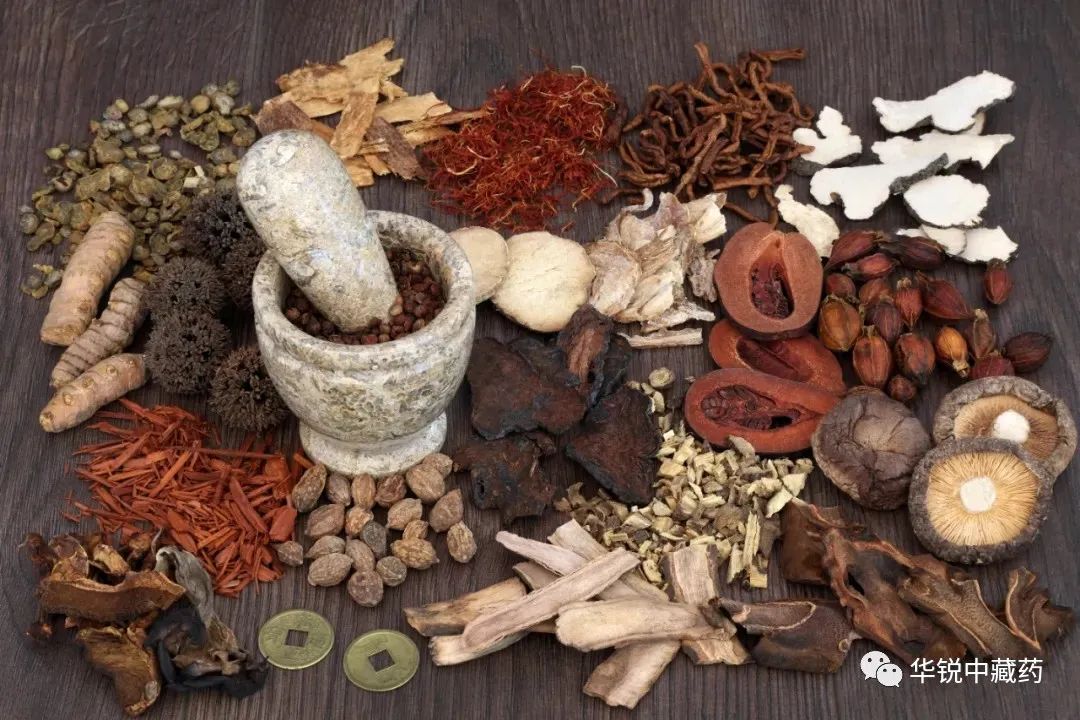
1、Ma Huang (Ephedra): A key herb for inducing sweating and releasing the exterior. It is primarily used for treating lung qi obstruction with cough and wheezing.
2、Bai Zhi (Angelica Dahurica): A key herb for treating Yangming headache.
3、Xin Yi (Magnolia Flower): A key herb for treating nasal congestion, headache, and runny nose.
4、Zi Su (Perilla): A commonly used herb for treating wind-cold colds.
5、Sheng Jiang (Fresh Ginger): Enters the spleen meridian, good for warming the middle and stopping vomiting, known as the “sacred herb for vomiting.”
6、Jing Jie (Schizonepeta): A common herb for dispersing wind and releasing the exterior.
7、Fang Feng (Saposhnikovia): A general herb for treating wind. A moistening agent for wind herbs.
8、Cang Er Zi (Xanthium): A good herb for treating nasal congestion.
9、Xiang Ru (Elsholtzia): A Ma Huang-like herb for releasing the exterior in summer.
10、Xi Xin (Asarum): A key herb for treating various pain syndromes caused by wind-cold and wind-damp, as well as nasal congestion headaches; also used for treating cold phlegm obstructing the lungs.
11、Ge Gen (Pueraria): A key herb for treating stiffness and pain in the neck and back.
12、Chai Hu (Bupleurum): A key herb for treating Shaoyang syndrome and commonly used for treating malaria with alternating chills and fever. (Also a key herb for treating liver and gallbladder disorders.)
13、Shi Gao (Gypsum): A key herb for clearing and draining excess heat from the lung and stomach meridians. (Also a key herb for treating high fever in the qi level and excess fire in the lung and stomach.)
14、Zhi Zi (Gardenia): A key herb for treating heat diseases with irritability and restlessness.
15、Xia Ku Cao (Selfheal Spike): A key herb for treating liver yang dizziness, eye pain at night, and swollen lymph nodes.
16、Huang Lian (Coptis): A key herb for treating damp-heat and fire stagnation; also a key herb for treating dysentery.
17、Zhi Mu (Anemarrhena): A key herb for clearing and draining excess heat from the lung and stomach meridians.
18、Ku Shen (Sophora): A commonly used herb for treating damp-heat related leukorrhea and certain skin diseases.
19、Sheng Di Huang (Rehmannia): A key herb for clearing heat, cooling blood, and stopping bleeding.
20、Jin Yin Hua (Honeysuckle): A key herb for treating all internal and external abscesses.

21、Pu Gong Ying (Dandelion): A key herb for treating breast abscesses.
22、Zi Hua Di Ding (Viola): Especially effective for treating carbuncles and toxic swellings.
23、Ye Ju Hua (Wild Chrysanthemum): A good herb for treating external carbuncles and abscesses.
24、Chong Lou (Corydalis): Commonly used for treating abscesses, swellings, and snake bites.
25、Lou Lu (Luffa): A good herb for treating breast abscesses.
26、Tu Fu Ling (Smilax): A key herb for treating syphilis.
27、She Gan (Belamcanda): A commonly used herb for treating sore throat.
28、Long Dan Cao (Gentian): A key herb for treating damp-heat and excess fire in the liver channel.
29、Lian Qiao (Forsythia): Known as the “sacred herb for sores.”
30、大青叶 (Da Qing Ye): A key herb for treating various conditions caused by blood heat and toxicity.
31、Yu Xing Cao (Houttuynia): A key herb for treating lung abscesses.
32、Hong Teng (Sargentodoxa): A key herb for treating intestinal abscesses.
33、She Gan (Belamcanda): Commonly used for sore throat.
34、Shan Dou Gen (Sophora): A key herb for treating sore throat.
35、Ma Bo (Fungus): Commonly used for sore throat, especially for cases with bleeding and ulceration.
36、Ma Chi Xian (Portulaca): Commonly used for treating dysentery.
37、Ban Bian Lian (Lobelia): Commonly used for treating various conditions caused by heat toxicity and abscesses. (Campanulaceae)
38、Jin Qiao Mai (Jin Qiao): Known for treating lung abscesses with thick, foul-smelling phlegm or purulent blood.
39、Bai Tou Weng (Pulsatilla): A good herb for treating heat-toxicity dysentery.
40、Bai Lian (White Lily): Commonly used for treating burns and scalds.
41、Si Ji Qing (Four Seasons Green): Especially suitable for treating burns and scalds.
42、Lu Dou (Mung Bean): Sweet and cold, good for resolving heat toxicity, such as from aconite, croton, arsenic, etc. A good detoxifying herb.
43、Sheng Di (Rehmannia): A key herb for clearing heat and cooling blood, stopping bleeding.
44、Mu Dan Pi (Moutan): A key herb for treating night sweats and bone steaming.
45、Qing Hao (Artemisia): Good for clearing malaria and treating malaria.
46、Di Gu Pi (Lycium): Good for treating night sweats and is a great remedy for clearing empty heat.
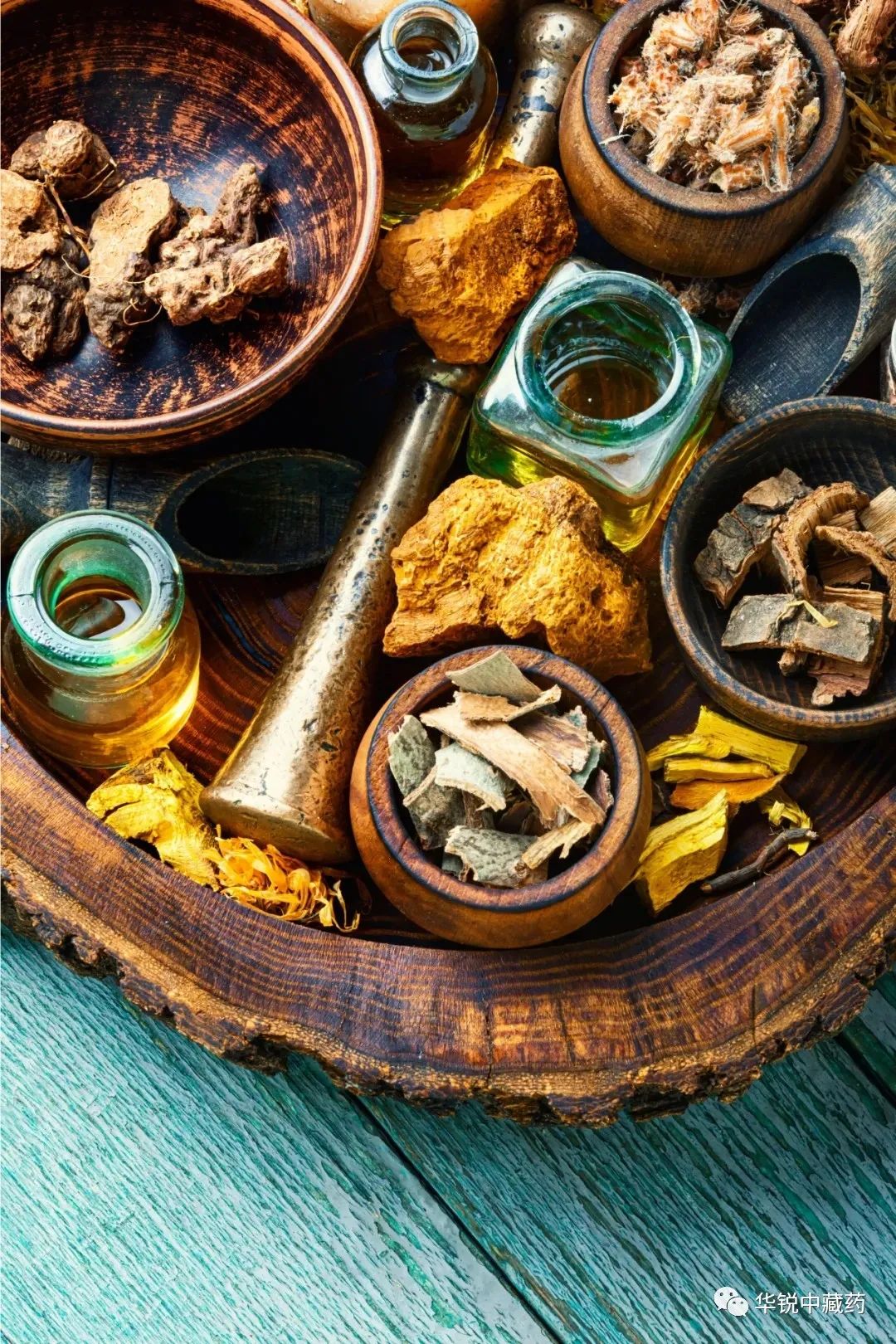
47、Yin Chai Hu (Yin Chai Hu): A commonly used herb for clearing empty heat and treating bone steaming.
48、Da Huang (Rhubarb): A key herb for treating constipation due to accumulation. Especially suitable for excess heat constipation. Commonly used for blood stasis.
49、Mang Xiao (Mirabilite): A key herb for treating internal heat accumulation in the intestines, causing hard stools that are difficult to pass.
50、Wei Ling Xian (Clematis): A key herb for treating wind-cold-damp bi syndrome with limb stiffness or numbness.
51、Fan Xie Ye (Senna): Commonly used for habitual constipation and constipation in the elderly.
52、Du Huo (Angelica): A key herb for treating wind-damp bi pain. Applicable for both acute and chronic cases.
53、Wei Ling Xian (Clematis): A key herb for treating wind-damp bi pain. Strong and effective, it moves through the twelve meridians.
54、Xu Chang Qing (Xuchangqing): A key herb for treating wind bi or severe bi pain.
55、Chuan Wu (Aconite): A good herb for treating wind-cold-damp bi syndrome, especially suitable for cases with predominant cold evil.
56、Qi She (Agkistrodon): A key herb for dispelling wind and treating internal and external wind evil. Especially effective for stubborn bi syndrome that has persisted for a long time. Also commonly used for convulsions and spasms, as well as for wind toxin obstructing the skin surface. Wu Shao She has similar effects but is less potent and non-toxic.
57、Mu Guo (Papaya): A key herb for treating wind-damp bi pain and meridian stiffness. (Also commonly used for treating wind-damp bi syndrome with heaviness, stiffness, numbness, and vomiting or diarrhea.)
58、Song Jie (Pine Resin): Especially effective for treating wind-damp bi syndrome with predominant cold dampness, dispelling wind from the muscles and bones.
59、Hai Feng Teng (Cayratia): Commonly used for wind-cold-damp bi syndrome, joint pain, muscle stiffness, and limited movement.
60、Kunming Mountain Begonia: A good herb for treating long-standing joint pain and numbness due to wind-cold-damp.
61、Xue Shang Yi Zhi (Xue Shang Yi Zhi): Known for its pain-relieving properties, effective for various types of pain.
62、Qin Jiao (Gentian): A moistening agent among wind herbs. Can be used regardless of cold or heat, acute or chronic, especially suitable for heat bi.
63、Fang Ji (Stephania): A key herb for treating wind-damp bi syndrome, especially for cases with damp-heat predominating, causing joint pain and swelling.
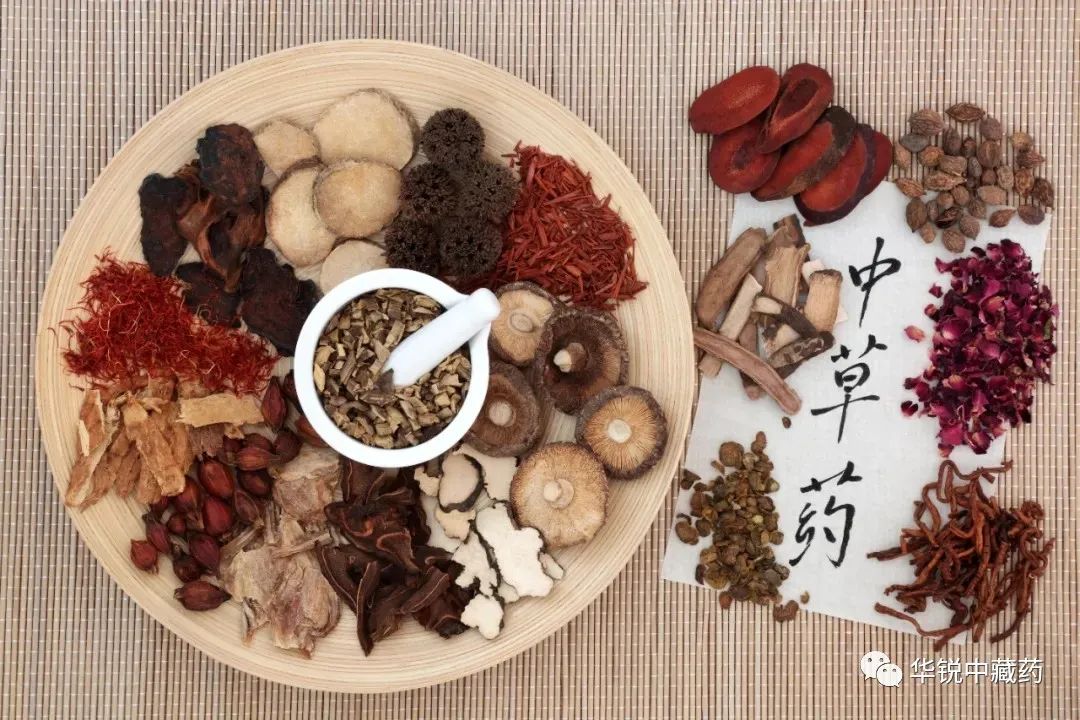
64、Sang Zhi (Mulberry Branch): Applicable for bi syndrome regardless of cold or heat, especially suitable for wind-damp-heat bi. Good for the upper limbs.
65、Hai Tong Pi (Erythrina): Especially effective for joint pain in the lower limbs.
66、Lei Gong Teng (Tripterygium): A key herb for treating stubborn wind-damp bi syndrome. Highly toxic.
67、Wu Jia Pi (Acanthopanax): A strong herb for dispelling wind-damp. Especially suitable for the elderly and those with chronic illnesses.
68、Gou Ji (Cibotium): Especially suitable for treating lumbar pain and stiffness due to liver and kidney deficiency with wind-cold-damp evil.
69、Qian Nian Jian (Eclipta): “Especially suitable for the elderly,” often used in conjunction with Zuan Di Feng.
70、Xue Lian Hua (Snow Lotus): Especially suitable for wind-damp bi syndrome with predominant cold dampness.
71、Sang Ji Sheng (Mulberry Mistletoe): A key herb for treating liver and kidney deficiency with restless fetus.
72、Huo Xiang (Agastache): A key herb for transforming damp turbidity. Can stop vomiting, especially effective for vomiting caused by damp turbidity obstruction.
73、Cang Zhu (Atractylodes): A key herb for treating damp obstruction in the middle jiao. When wind-cold with dampness attacks, use Cang Zhu instead of Qiang Huo.
74、Hou Po (Magnolia Bark): A key herb for regulating qi, eliminating stagnation, and relieving distension. (Also a key herb for relieving distension.)
75、Sha Ren (Amomum): A key herb for awakening the spleen and regulating the stomach. Especially suitable for cold-damp qi stagnation. A good herb for treating pregnancy-related qi stagnation, nausea, and restless fetus.
76、Fu Ling (Poria): A key herb for promoting urination and reducing swelling.
77、Che Qian Zi (Plantago): A key herb for promoting urination and relieving dysuria. It helps with bowel movements.
78、Hua Shi (Talc): A good herb for treating damp-heat dysuria; also effective for summer heat and dampness; commonly used for damp sores, eczema, and prickly heat.
79、Qu Mai (Dianthus): Commonly used for treating dysuria, especially heat dysuria.
80、Bian Xu (Polygonum): Known for its ability to kill three types of parasites: roundworm, pinworm, and hookworm.
81、Mu Tong (Akebia): A key herb for treating damp-heat dysuria and heart fire rising or moving down to the small intestine, causing sores on the tongue and mouth, irritability, and red urine.
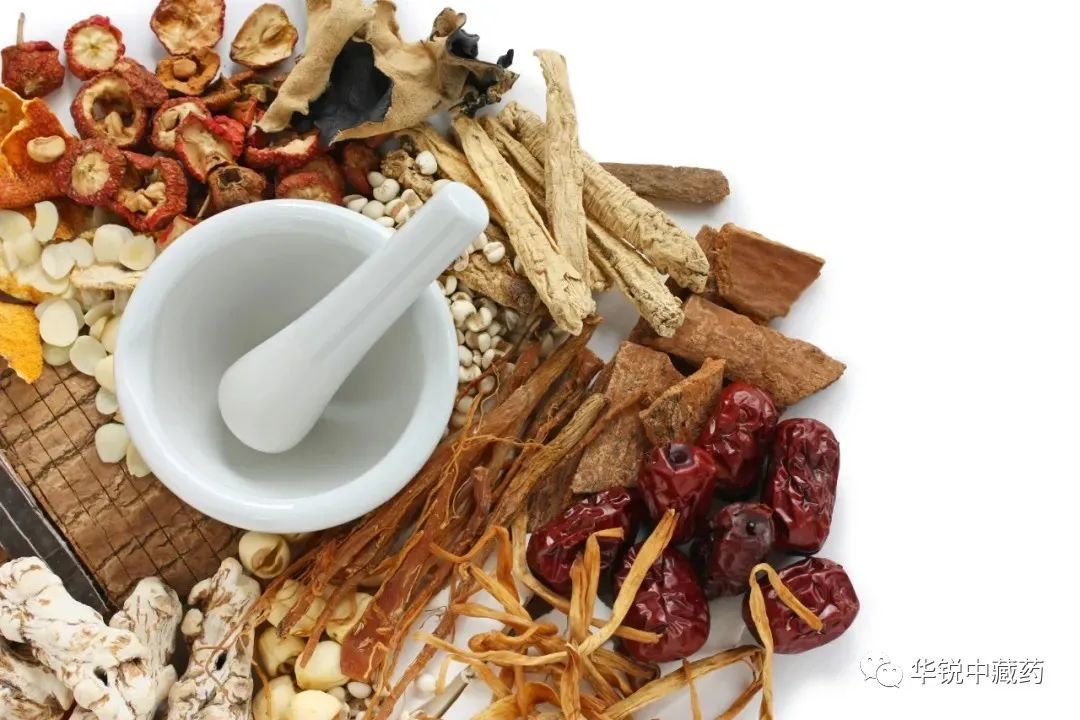
82、Hai Jin Sha (Lygodium): A key herb for treating various types of dysuria, commonly used as an adjunct herb.
83、Shi Wei (Pyrrosia): Especially suitable for blood dysuria.
84、Bi Xie (Dioscorea): Good for promoting urination and clearing dampness, especially for treating damp-heat dysuria. (Dioscoreaceae)
85、Jin Qian Cao (Lysimachia): A key herb for treating sand dysuria and stone dysuria; also effective for damp-heat jaundice and liver-gallbladder stones.
86、Yin Chen (Virgate Wormwood): A key herb for treating damp-heat jaundice. (Also a key herb for treating jaundice.)
87、Fu Zi (Aconite): A key herb for warming the yang and rescuing the reverse. (Known as the “best herb for rescuing the yang.”)
88、Gan Jiang (Dried Ginger): A key herb for warming the middle and dispersing cold. (A primary herb for warming the middle jiao.)
89、Rou Gui (Cinnamon): A key herb for treating lower jiao coldness, floating yang, and various conditions. A good herb for treating spleen and kidney yang deficiency. (A key herb for treating kidney yang deficiency.)
90、Wu Zhu Yu (Evodia): A key herb for treating liver cold qi stagnation pain. A key herb for treating middle cold liver counterflow or cold stagnation in the liver meridian. (A key herb for treating liver cold qi stagnation pain; also commonly used for spleen and kidney yang deficiency, and morning diarrhea.)
91、Ding Xiang (Clove): A key herb for treating stomach cold and hiccups.
92、Mu Dan Pi (Moutan): A key herb for treating night sweats and bone steaming.
93、Chen Pi (Tangerine Peel): A key herb for treating phlegm.
94、Mu Xiang (Aucklandia): A key herb for regulating qi and relieving pain; also effective for treating damp-heat dysentery with urgency and heaviness.
95、Xiang Fu (Cyperus): A key herb for soothing the liver, relieving depression, and regulating qi to relieve bi pain. A key herb for gynecological conditions and regulating menstruation. “The commander of qi diseases, especially for women, is the main strategist for qi and blood.”
96、Xie Bai (Garlic Chives): A key herb for treating chest bi.
97、大腹皮 (Da Fu Pi): A key herb for relieving qi and promoting digestion.
98、Shan Zha (Hawthorn): A key herb for digesting greasy meat food stagnation.
99、Shen Qu (Malt): A key herb for treating food stagnation and external pathogens.
100、Mai Ya (Barley): A key herb for treating food stagnation from rice, flour, and tubers, and can help with lactation.
101、Lai Fu Zi (Radish Seed): A key herb for treating food stagnation and qi stagnation.
102、Ji Nei Jin (Chicken Gizzard Lining): A key herb for promoting digestion and regulating the spleen.
103、Shi Jun Zi (Quisqualis): A key herb for treating roundworm disease; also effective for treating childhood malnutrition. Especially suitable for children. Avoid with tea.
104、Ku Lian Pi (Melia): A broad-spectrum anthelmintic herb. Primarily used for expelling roundworms.
105、Bing Lang (Areca): An effective herb for expelling tapeworms and can also promote bowel movements.
106、Nan Gua Zi (Pumpkin Seed): A good herb for expelling tapeworms, often used with Bing Lang.
107、He Cao Ya (Herba): A new herb for expelling tapeworms. (Rosaceae)
108、Lei Wan (Corydalis): A broad-spectrum insecticide, especially effective for tapeworms. Can kill insects directly.
109、Da Ji (Cirsium): A key herb for treating blood heat and excessive movement.
110、Xiao Ji (Cirsium): A key herb for treating blood heat and excessive movement, as well as carbuncles and toxic swellings.
111、Di Yu (Sanguisorba): A key herb for treating blood heat bleeding, especially for lower body bleeding; also effective for treating burns and scalds.
112、Ce Bai Ye (Platycladus): A key herb for treating various bleeding disorders, especially for blood heat cases.
113、Zhu Ma Gen (Ramie): A key herb for stopping bleeding, clearing heat, and calming the fetus, traditionally regarded as a key herb for stabilizing pregnancy. (Urticaceae)
114、San Qi (Notoginseng): A key herb for treating bleeding and blood stasis. (A key herb for trauma.)
115、Qian Cao (Rubia): A key herb for regulating menstruation in gynecological conditions.
116、Pu Huang (Cattail Pollen): A good herb for stopping bleeding and promoting blood circulation. Effective for all bleeding disorders, regardless of cold or heat, with or without stasis, especially for cases with stasis. Commonly used in gynecology.
117、Jiang Xiang (Frankincense): A commonly used herb for internal and external bleeding due to trauma.
118、Bai Ji (Bletilla): A key herb for stopping bleeding and promoting healing. Especially effective for lung and stomach bleeding. Also commonly used for external ulcers to reduce swelling and promote tissue regeneration.
119、Zong Lan (Palm Charcoal): A key herb for stopping bleeding. Especially effective for cases of menorrhagia. Strong astringent properties, should be used for cases without stasis.
120、Ai Ye (Mugwort): A key herb for warming the meridians and stopping bleeding. Especially effective for gynecological conditions with cold deficiency or cold obstructing the uterus; also a key herb for stabilizing pregnancy.
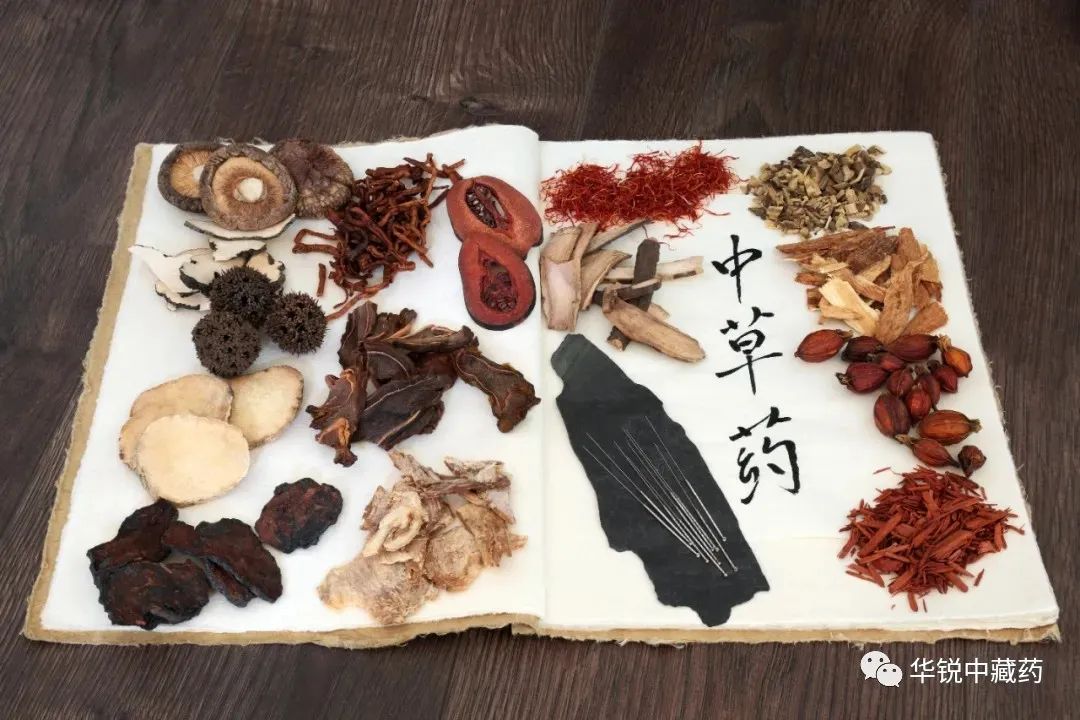
121、Pao Jiang (Fried Ginger): A key herb for treating bleeding disorders due to spleen deficiency.
122、Zao Xin Tu (Clay): A key herb for warming the meridians and stopping bleeding. Especially effective for cases of vomiting and rectal bleeding.
123、Chuan Xiong (Ligusticum): Known as the “qi herb in blood.” “Regulates menstruation, opens up stagnation,” a key herb for gynecological conditions. Effective for blood stasis and qi stagnation; can also “ascend to the head” and is a key herb for treating headaches. “For headaches, use Chuan Xiong.”
124、Yan Hu Suo (Corydalis): Known for its ability to “move blood and qi stagnation, and qi and blood stagnation, thus specializing in treating various pains throughout the body,” a good herb for invigorating blood and alleviating pain. “For severe heart pain, quickly seek Yan Hu Suo.”
125、Yu Jin (Curcuma): A key herb for invigorating blood, regulating qi, and cooling blood.
126、Hu Zhang (Polygonum): A key herb for treating burns and snake bites.
127、Jiang Huang (Turmeric): Known for its ability to invigorate the limbs and alleviate bi pain.
128、Ru Xiang (Frankincense): A key herb for treating trauma. It can alleviate pain, disperse stasis, invigorate blood, and promote healing, as well as eliminate necrotic tissue and promote tissue regeneration.
129、Mo Yao (Myrrh): A key herb for treating trauma. Commonly used for severe stomach pain due to blood stasis and qi stagnation.
130、Wu Ling Zhi (Flying Squirrel Feces): A key herb for treating pain due to stasis. Often used in conjunction with Pu Huang, as in the “Shi Xiao San” formula.
131、Dan Shen (Salvia): A commonly used herb for regulating menstruation in gynecological conditions. A good herb for invigorating blood and regulating menstruation. It can remove stasis and generate new blood without harming the normal qi. “One dose of Dan Shen powder has the same effect as Si Wu Tang.” Additionally, Si Wu Tang consists of: Dang Gui, Chuan Xiong, Shu Di, and Bai Shao.
132、Hong Hua (Carthamus): A key herb for invigorating blood, breaking stasis, and regulating menstruation; also commonly used for obstetric blood stasis conditions and for treating trauma and swelling.
133、Tao Ren (Peach Kernel): A good herb for treating constipation, intestinal abscesses, and lung abscesses. (A commonly used herb for treating various blood stasis conditions.)
134、Yi Mu Cao (Leonurus): A key herb for treating gynecological conditions related to menstruation and childbirth.
135、Ze Lan (Lycopus): A commonly used herb for treating gynecological conditions related to menstruation and childbirth. Especially suitable for edema caused by water and stasis obstruction.
136、Niu Xi (Achyranthes): A key herb for treating gynecological conditions related to childbirth. It invigorates blood and removes stasis while promoting downward flow. It is good for guiding fire (blood) downward.
137、Ji Xue Teng (Spatholobus): A commonly used herb for treating meridian obstruction and blood vessel disharmony. (Fabaceae)
138、Wang Bu Liu Xing (Vaccaria): A key herb for promoting lactation. It is also effective for treating carbuncles and swelling.
139、Tu Bie Chong (Eupolyphaga): A commonly used herb for trauma. Especially effective for fractures, muscle injuries, and blood stasis swelling.
140、Ma Qian Zi (Semen Strychnos): A good herb for reducing swelling and dispersing lumps, commonly used for treating trauma and pain. It is also effective for treating stubborn wind-damp bi syndrome, stiffness, pain, and numbness.
141、Zi Ran Tong (Copper): A key herb for promoting fracture healing, commonly used in trauma.
142、Su Mu (Sappan Wood): A commonly used herb for treating blood stasis in gynecological conditions and other blood stasis conditions.
143、Guo Sui Bu (Drynaria): A key herb for treating trauma. It can enter the kidney to treat bones, hence its name.
144、Xue Jie (Dragon’s Blood): A key herb for treating trauma and other pain due to stasis.
145、E Zhu (Curcuma): Specializes in treating blood stagnation in qi, another “qi and blood herb”. Suitable for conditions caused by long-term food stagnation and qi stagnation, as well as various types of pain caused by qi stagnation and blood stasis. Often used in conjunction with San Leng.
146、San Leng (Sparganium): Similar to E Zhu, both can break qi and move blood, and alleviate pain. San Leng is more focused on breaking blood, while E Zhu is more focused on breaking qi.
147、Ban Xia (Pinellia): A key herb for treating damp phlegm and cold phlegm. (A key herb for drying dampness and transforming phlegm, as well as warming and transforming cold phlegm.) Especially suitable for treating damp phlegm in the organs. It has a bitter taste and can descend and harmonize the stomach, making it a key herb for stopping vomiting, especially effective for phlegm-damp or cold stomach causing nausea and vomiting.
148、Yu Bai Fu (Bupleurum): A key herb for dispelling wind phlegm and stopping pain, especially effective for head and facial diseases.
149、Bai Jie Zi (White Mustard Seed): Good for eliminating “phlegm beneath the skin and membrane,” promoting qi and resolving phlegm.

150、Zao Jiao (Soapberry): Effective for stubborn phlegm obstructing the lungs, especially for cough with difficulty breathing and thick phlegm.
151、Xuan Fu Hua (Inula): A key herb for treating lung and stomach qi counterflow. “All flowers rise, but Xuan Fu alone descends.” It can descend qi, transform phlegm, and stop vomiting.
152、Bai Qian (Cynanchum): Suitable for both cold and heat, external and internal injuries, new coughs, and chronic coughs. Especially effective for phlegm-damp or cold phlegm obstructing the lungs, causing loss of qi descent. It can descend qi, transform phlegm, and warm cold phlegm.
153、Chuan Bei Mu (Fritillaria): Known for its moistening properties, especially suitable for chronic cough due to internal injury, dry phlegm heat, and phlegm heat cough. A commonly used herb for treating heat phlegm and dry phlegm cough.
154、Zhe Bei Mu (Fritillaria): Known for its draining properties, commonly used for treating wind-heat cough and phlegm heat obstructing the lungs. A commonly used herb for treating lung heat cough.
155、Zhu Li (Bamboo Juice): A key herb for treating phlegm heat cough, especially for thick, difficult-to-expectorate phlegm.
156、Zhu Ru (Bamboo Shavings): A key herb for treating stomach heat and vomiting.
157、Tian Zhu Huang (Bamboo Sugar): A key herb for clearing heat phlegm and calming the spirit. Similar to Zhu Li but without the cold and slippery properties.
158、Qian Hu (Peucedanum): Used in conjunction with Bai Qian, but its phlegm-transforming power is not as strong. Its properties are cool, suitable for treating external cough without heat.
159、Jie Geng (Platycodon): Known for its upward-moving properties. “A vessel for all herbs, a guide for the lungs.” It can carry herbs upward.
160、Meng Shi (Ming Stone): A good herb for treating seizures. It can dissolve phlegm accumulation and calm the liver. Used in formulas like “Duo Ming San.”
161、Xing Ren (Apricot Kernel): A key herb for treating cough and wheezing.
162、Bai Bu (Stemona): Specializes in moistening the lungs and stopping cough. A key herb for treating both new and chronic coughs, and can also kill parasites.
163、Zi Wan (Aster): Sweet and moist, warm but not hot, moist but not dry. Good for moistening the lungs and descending qi, relieving lung stagnation, and transforming phlegm. Suitable for all types of cough, regardless of external or internal causes, duration, or nature.
164、Ma Dou Ling (Aristolochia): Especially suitable for lung heat and cough with phlegm.
165、Sang Bai Pi (Mulberry Bark): A key herb for draining lung heat and relieving cough, promoting urination and reducing swelling. Gentle in action. It clears lung heat and reduces lung fire, especially suitable for cases of wind-water and lung heat.
166、Ting Li Zi (Descurainia): A key herb for draining lung heat and relieving cough, promoting urination and reducing swelling. Strong in action. It drains water vapor and phlegm from the lungs, especially suitable for cases of severe cough with difficulty lying down.
167、Bai Guo (Ginkgo): Especially suitable for women with leukorrhea due to spleen and kidney deficiency, with clear and thin discharge. It can astringe the lungs, transform phlegm, and stabilize cough. When combined with Ma Huang, it can “astringe the lungs without retaining evil, and disperse the lungs without depleting qi.”
168、Yang Jin Hua (Datura): An anesthetic and cough suppressant. Suitable for adults and elderly patients with cough and wheezing without phlegm, or with little phlegm and ineffective treatment.
169、Gua Lou (Trichosanthes): A key herb for treating chest bi due to heat phlegm.
170、Qing Qing Zi Pei, You You Wo Si. Zong Wo Bu Wang, Zi Ning Bu Lai?
171、Zhu Sha (Cinnabar): Known for its calming and tranquilizing properties, it can clear the heart and calm the spirit. A key herb for calming the heart and clearing fire.
172、Long Gu (Dragon Bone): A commonly used herb for calming the spirit.
173、Suan Zao Ren (Sour Jujube Seed): A key herb for nourishing the heart and calming the spirit.
174、Xie Cao (Valerian): A key herb for calming the spirit, relieving spasms, and dispelling wind.
175、He Huan Pi (Albizia): A key herb for soothing liver qi, a good herb for calming the spirit.
176、Yuan Zhi (Polygala): A key herb for connecting the heart and kidney, calming the spirit, and enhancing memory and cognition.

177、Shi Jue Ming (Abalone Shell): A key herb for cooling the liver and calming the liver. Especially suitable for liver and kidney yin deficiency with dizziness.
178、Dai Zhe Shi (Hematite): A key herb for calming and descending qi. Especially effective for descending stomach qi.
179、Ci Ji Li (Tribulus): A key herb for dispelling wind and brightening the eyes. Its flavor is pungent and good for dispersing wind-heat in the liver channel.
180、Sheng Tie Luo (Iron): Used for liver qi stagnation and excessive anger.
181、Ling Yang Jiao (Antelope Horn): A key herb for treating internal wind movement, seizures, and convulsions. Especially suitable for cases caused by extreme heat generating wind.
182、Niu Huang (Cattle Gallstone): A good herb for clearing heat and detoxifying. Commonly used for treating children’s high fever, delirium, and convulsions.
183、Zhen Zhu (Pearl): Commonly used for treating various eye diseases.
184、Gou Teng (Uncaria): Especially suitable for liver yang transformation, especially for cases of extreme heat generating wind, causing convulsions and high fever in children. (A commonly used herb for treating internal wind movement, seizures, and convulsions.)
185、Tian Ma (Gastrodia): Can calm liver yang, stop liver wind, and is gentle in nature. Suitable for various causes of internal wind movement, seizures, and convulsions, regardless of cold or heat.
186、Quan Xie (Scorpion): A key herb for treating convulsions and spasms. Its potency is comparable to that of Ling Yang Jiao. Its nature is gentle.
187、Wu Gong (Centipede): A strong herb for dispelling wind and stopping convulsions. Both Quan Xie and Wu Gong are key herbs for calming wind.
188、Jiang Can (Silkworm): Especially suitable for treating seizures and epilepsy with phlegm-heat.
189、She Xiang (Musk): A key herb for reviving consciousness. Effective for various causes of unconsciousness, regardless of cold or heat. Can also be used to induce labor.
190、Su He Xiang (Liquid Amber): A key herb for treating cold-induced unconsciousness with pale complexion, cold body, white tongue, and slow pulse.
191、Bing Pian (Borneol): A cooling and opening herb.
192、Shi Chang Pu (Acorus): Known for its ability to treat phlegm-damp and turbid evil obstructing the clear orifices, causing confusion.
193、Ren Shen (Ginseng): A key herb for greatly tonifying original qi, a key herb for rescuing the dying (a key herb for rescuing the dying; a key herb for tonifying the lungs; a key herb for tonifying the spleen).
194、Xi Yang Shen (American Ginseng): A cooling tonic among qi tonics. Its nature is cool. It tonifies both qi and yin. Especially suitable for severe cases of qi and yin deficiency with excessive heat.
195、Dang Shen (Codonopsis): A key herb for tonifying both qi and blood.
196、Tai Zi Shen (Pseudostellaria): A cooling tonic among qi tonics. Its nature is neutral. Suitable for mild cases of qi and yin deficiency without excessive heat.
197、Huang Qi (Astragalus): A key herb for tonifying the middle and benefiting qi. A key herb for treating qi deficiency and edema. Known as the “king of tonics.”
198、Bai Zhu (Atractylodes): A key herb for tonifying qi and strengthening the spleen. (The primary herb for tonifying spleen qi.)
199、Shan Yao (Chinese Yam): A good herb for tonifying both qi and yin.
200、Gan Cao (Licorice): A key herb for tonifying the spleen, benefiting qi, dispelling phlegm, stopping cough, alleviating pain, clearing heat, and detoxifying. Known as the “national elder.”

201、Da Zao (Jujube): A key herb for treating heart deficiency and “dryness of the organs” with lack of nourishment.
202、Sha Ji (Sea Buckthorn): A commonly used herb in Tibetan and Mongolian medicine for treating cough, wheezing, and excessive phlegm.
203、Yi Tang (Maltose): Especially suitable for treating abdominal pain due to spleen and stomach deficiency, especially when the pain is worse on an empty stomach and improves after eating. Also used for developmental delays in children.
204、Lu Rong (Deer Antler Velvet): A strong yang tonic with a slow effect, used for chronic yang deficiency. Less effective for acute cases compared to Aconite. A key herb for warming the kidneys, strengthening yang, tonifying the governor vessel, and nourishing essence and blood.
205、Yin Yang Huo (Epimedium): Also known as “Xian Ling Pi” or “Abandoning Staff Grass.” A key herb for tonifying the kidneys and strengthening yang, dispelling wind, and eliminating dampness.
206、Ba Jiao Tian (Morinda): Especially suitable for treating kidney yang deficiency with wind-damp.
207、Du Zhong (Eucommia): A key herb for treating kidney deficiency with lumbar and knee pain or weakness in the muscles and bones; also effective for treating liver and kidney deficiency with restless fetus.
208、Rou Cong Rong (Cistanche): A key herb for tonifying kidney yang and nourishing essence and blood.
209、Tu Si Zi (Cuscuta): A key herb for tonifying both yin and yang. It can tonify kidney yang, nourish kidney essence, stabilize urine, and calm the fetus.
210、Ge Jie (Gecko): A good herb for treating various deficiency syndromes and cough.
211、Yi Zhi Ren (Alpinia): A key herb for treating spleen cold diarrhea or excessive salivation.

212、Dong Chong Xia Cao (Cordyceps): Known for its ability to invigorate yang and restore vitality, also a good herb for tonifying the lungs and kidneys, especially suitable for those with cough and phlegm.
213、Hai Ma (Seahorse): Known for its ability to guide fire back to its source and restore true qi. Used for treating kidney deficiency with wheezing.
214、Dang Gui (Angelica Sinensis): A key herb for regulating menstruation in gynecological conditions; a good herb for tonifying blood (known as the “sacred herb for tonifying blood” and a key herb for regulating menstruation in gynecology). It is also a key herb for invigorating blood and breaking stasis.
215、Wu Zei Gu (Cuttlefish Bone): A good herb for gynecological conditions.
216、Shu Di Huang (Rehmannia): A key herb for nourishing blood and tonifying deficiency; a key herb for tonifying kidney yin. “Greatly tonifies the true yin of the five organs,” and “greatly tonifies the true water.”
217、Bai Shao (White Peony): A key herb for treating liver yang hyperactivity, headaches, and dizziness.
218、E Jiao (Donkey Hide Gelatin): Sweet and neutral, a key herb for tonifying blood, especially effective for treating blood deficiency due to bleeding. Its sweet taste and sticky texture make it a good herb for stopping bleeding.
219、He Shou Wu (Polygonum Multiflorum): Neither cold nor dry, a good herb for tonifying and nourishing.
220、Gou Qi Zi (Goji Berry): A good herb for tonifying kidney essence and liver blood.
221、Ma Huang Gen (Ephedra Root): A key herb for astringing the lungs, stabilizing the exterior, and stopping sweating.
222、Fu Xiao Mai (Wheat): A good herb for nourishing the heart and stabilizing fluids, stabilizing the exterior, and stopping sweating.
223、Wu Wei Zi (Schisandra): A key herb for treating chronic cough and wheezing. A commonly used herb for kidney deficiency with unstable essence, leading to nocturnal emissions and frequent urination.
224、Wu Mei (Mume): A commonly used herb for treating chronic diarrhea and dysentery.
225、Ying Su Ke (Poppy Seed): A sacred herb for stopping diarrhea. Suitable for chronic diarrhea and dysentery without stasis.
226、He Zi (Terminalia): A commonly used herb for treating chronic diarrhea and dysentery. A key herb for treating loss of voice.
227、Shi Liu Pi (Pomegranate Peel): A commonly used herb for treating chronic diarrhea and dysentery.
228、Chi Shi Zhi (Halloysite): A commonly used herb for treating chronic diarrhea and dysentery, especially for cases with pus and blood in the stool. Often used in conjunction with Yu Yu Liang.
229、Shan Zhu Yu (Cornus): A key herb for tonifying both yin and yang; a key herb for stabilizing essence and stopping nocturnal emissions; a key herb for preventing loss of original qi.
230、Sang Piao Xiao (Mantis Egg Case): A good herb for treating kidney deficiency with nocturnal emissions, frequent urination, and leukorrhea.
231、Hai Piao Xiao (Cuttlefish Bone): A good herb for treating stomach pain and excessive stomach acid.
232、Lian Zi (Lotus Seed): A key herb for treating spleen and kidney deficiency with leukorrhea.
233、Qian Shi (Euryale): A good herb for treating leukorrhea.
234、Chun Pi (Ailanthus): A commonly used herb for treating leukorrhea, especially suitable for cases with blood heat, menorrhagia, and rectal bleeding.
235、Ji Guo Hua (Cockscomb Flower): A commonly used herb for treating leukorrhea.
236、Chang Shan (Dichroa): A key herb for treating malaria. Especially effective for intermittent malaria and three-day malaria.
237、Liu Huang (Sulfur): A key herb for treating scabies.
238、She Chuang Zi (Cnidium): A commonly used herb for skin and gynecological conditions.
239、Feng Fang (Beehive): A commonly used herb for external applications.
240、Sheng Yao (Fresh Herbs): A commonly used herb for external applications.
241、Boron (Borax): A commonly used herb in otolaryngology and ophthalmology, often used externally.

